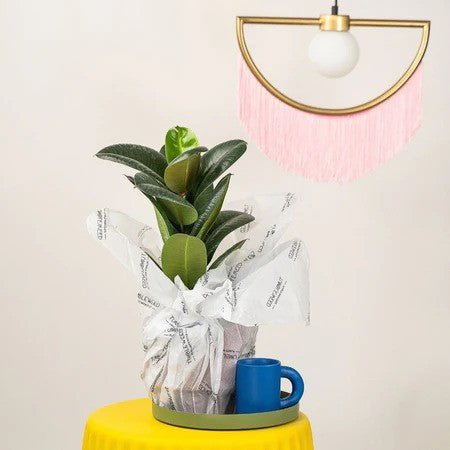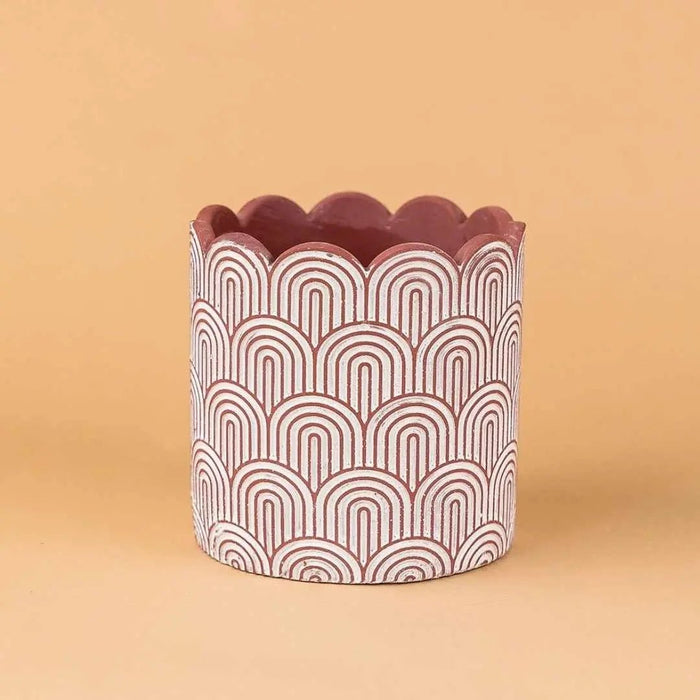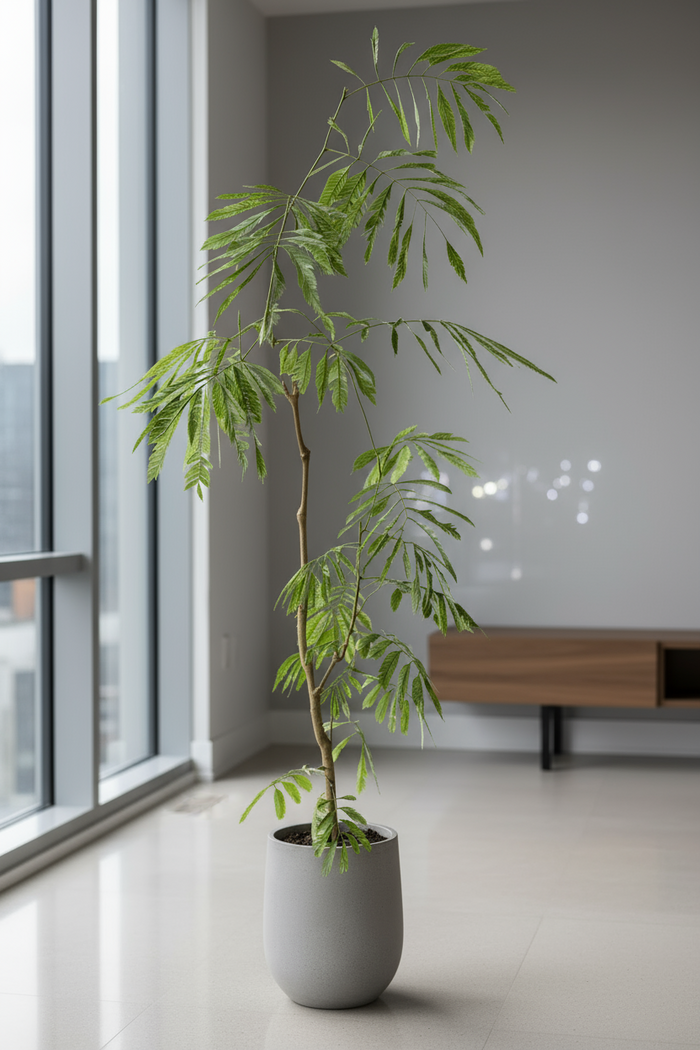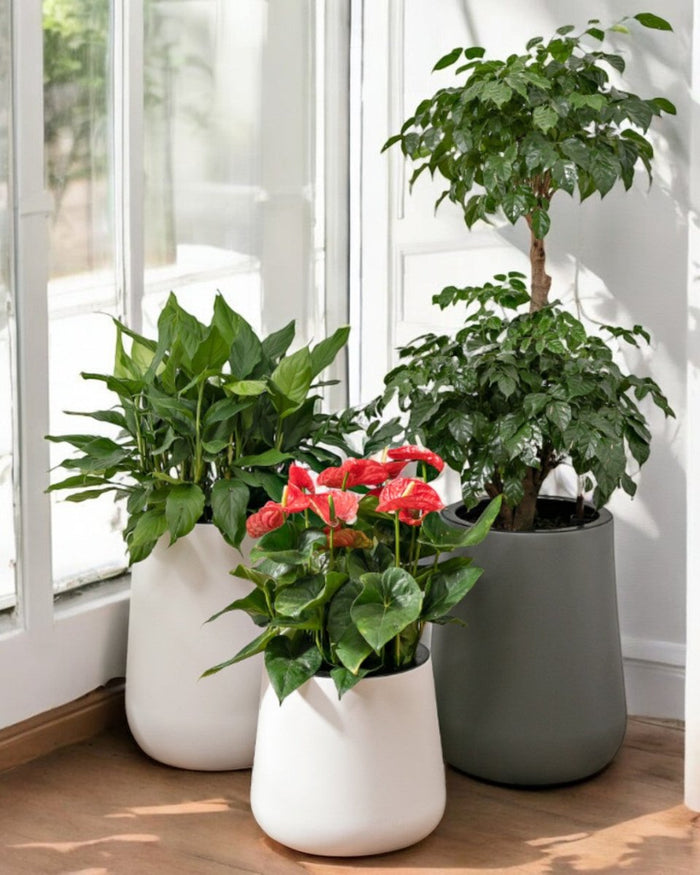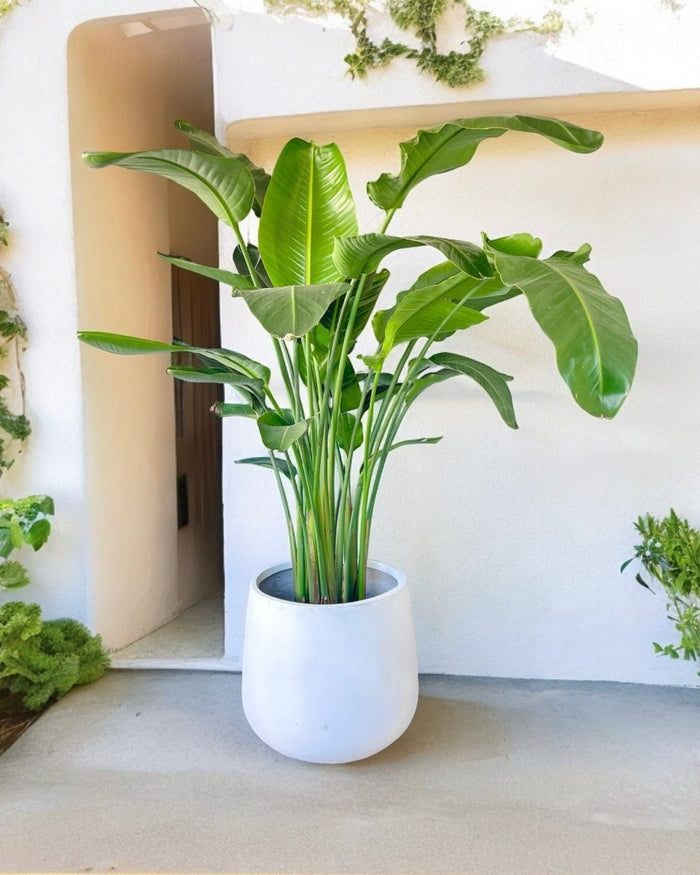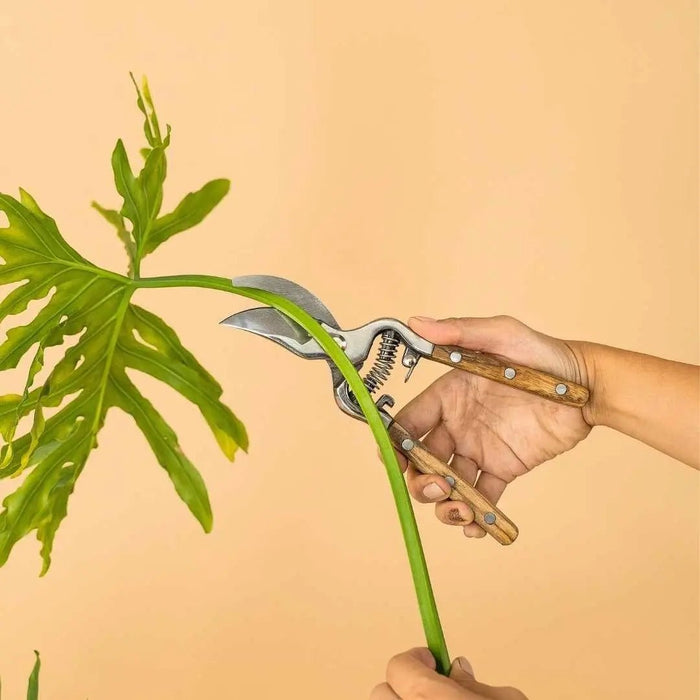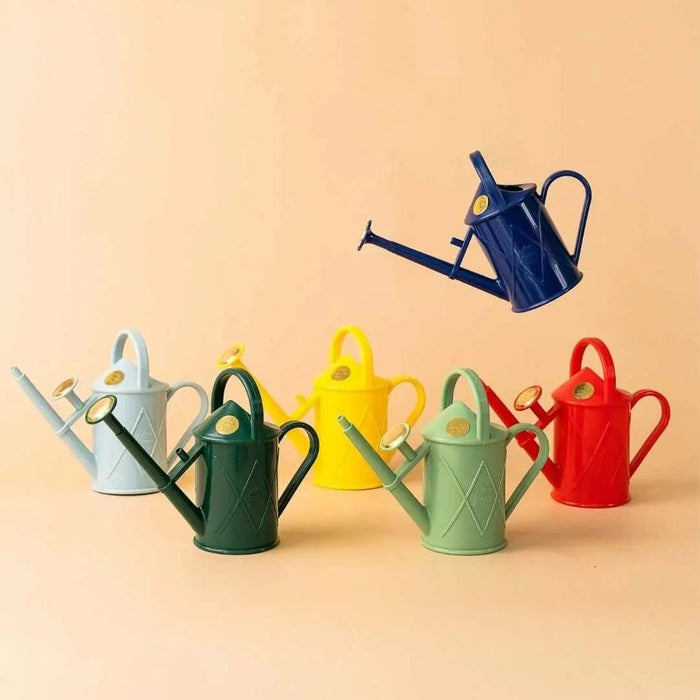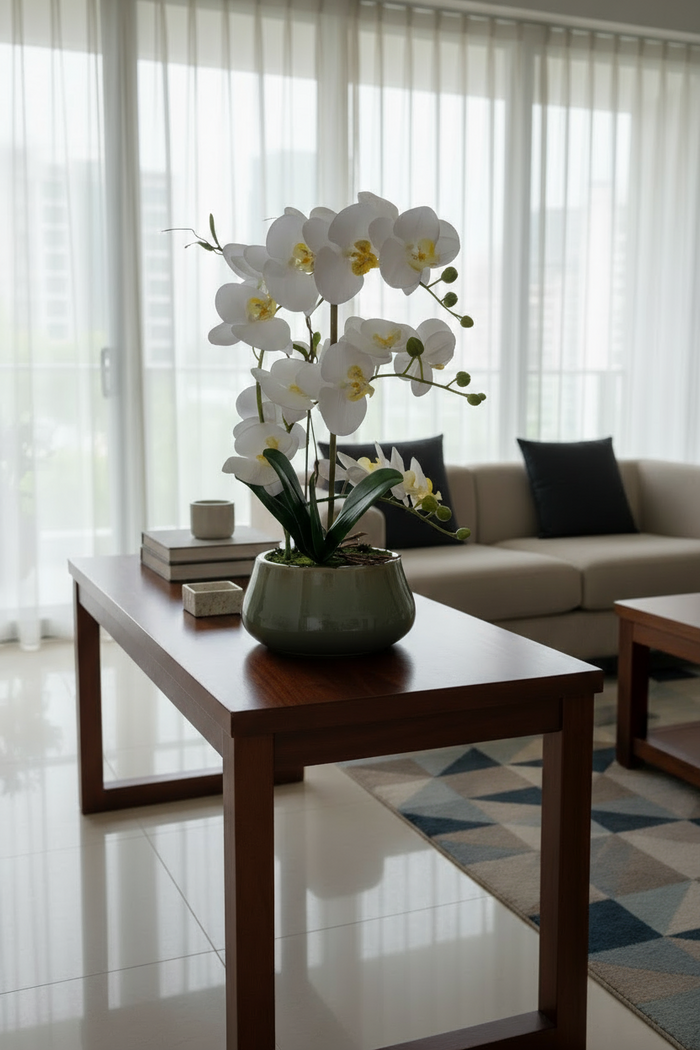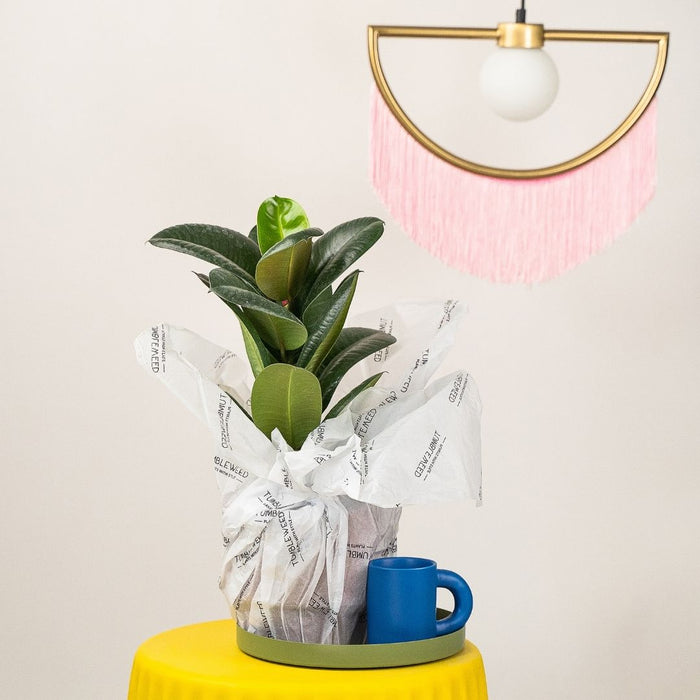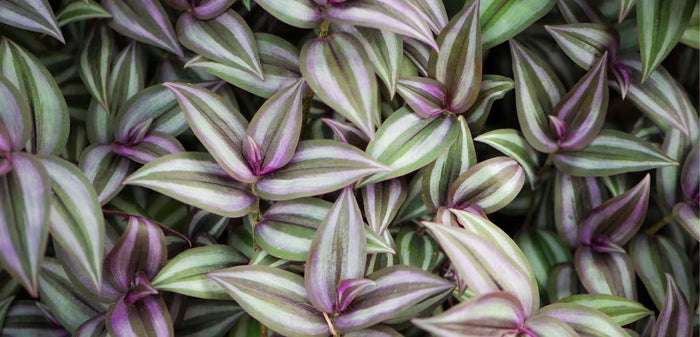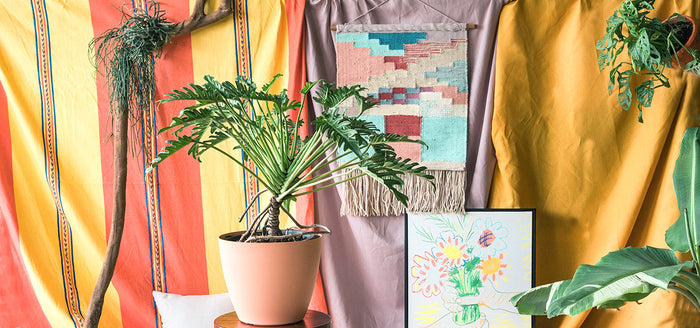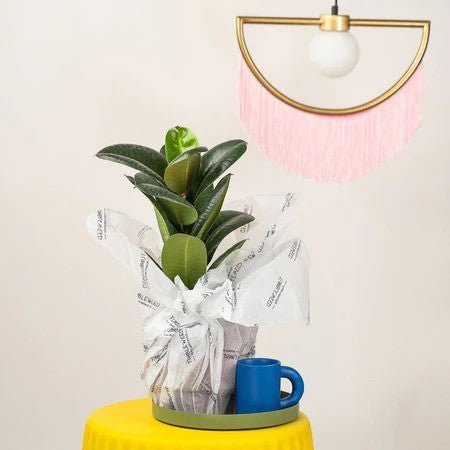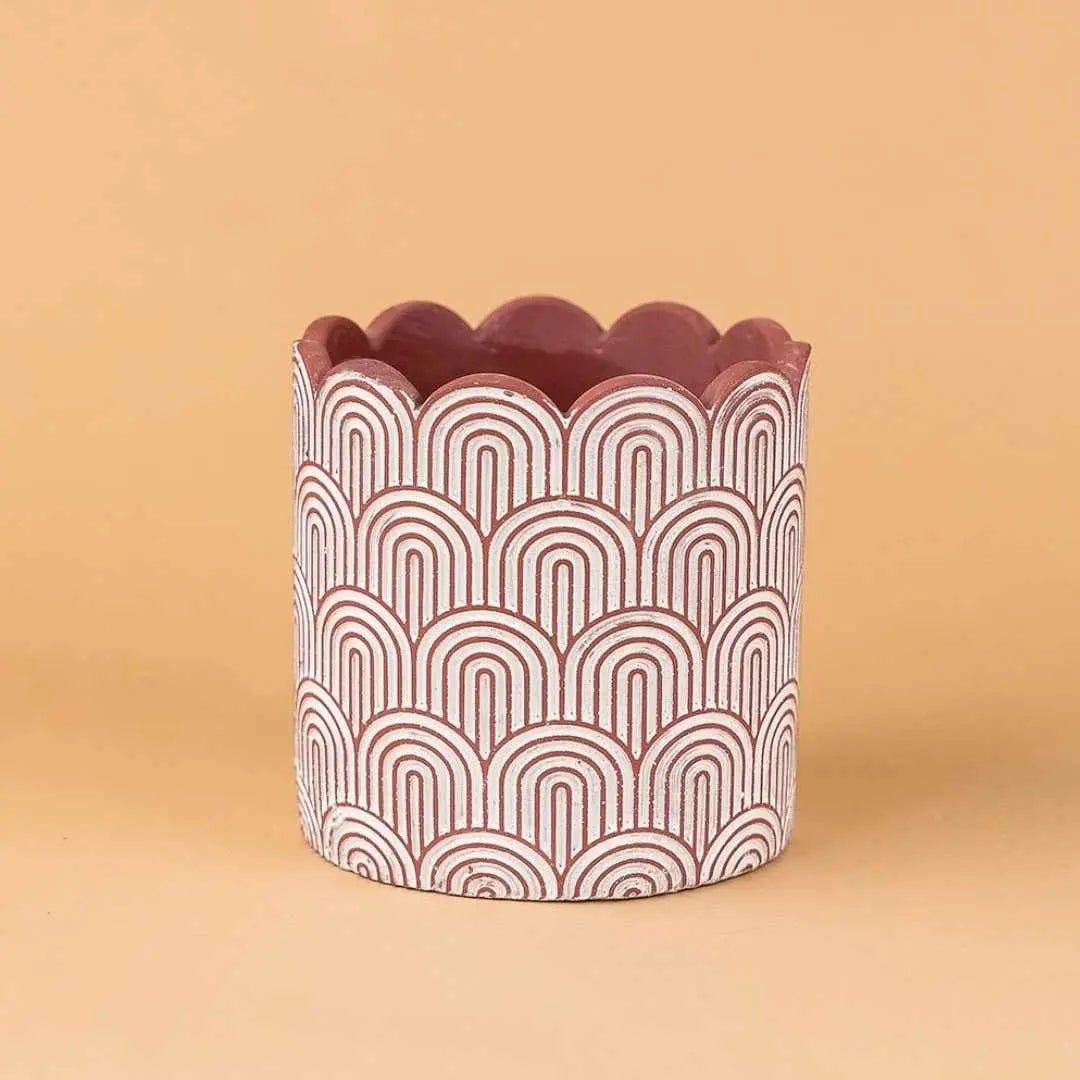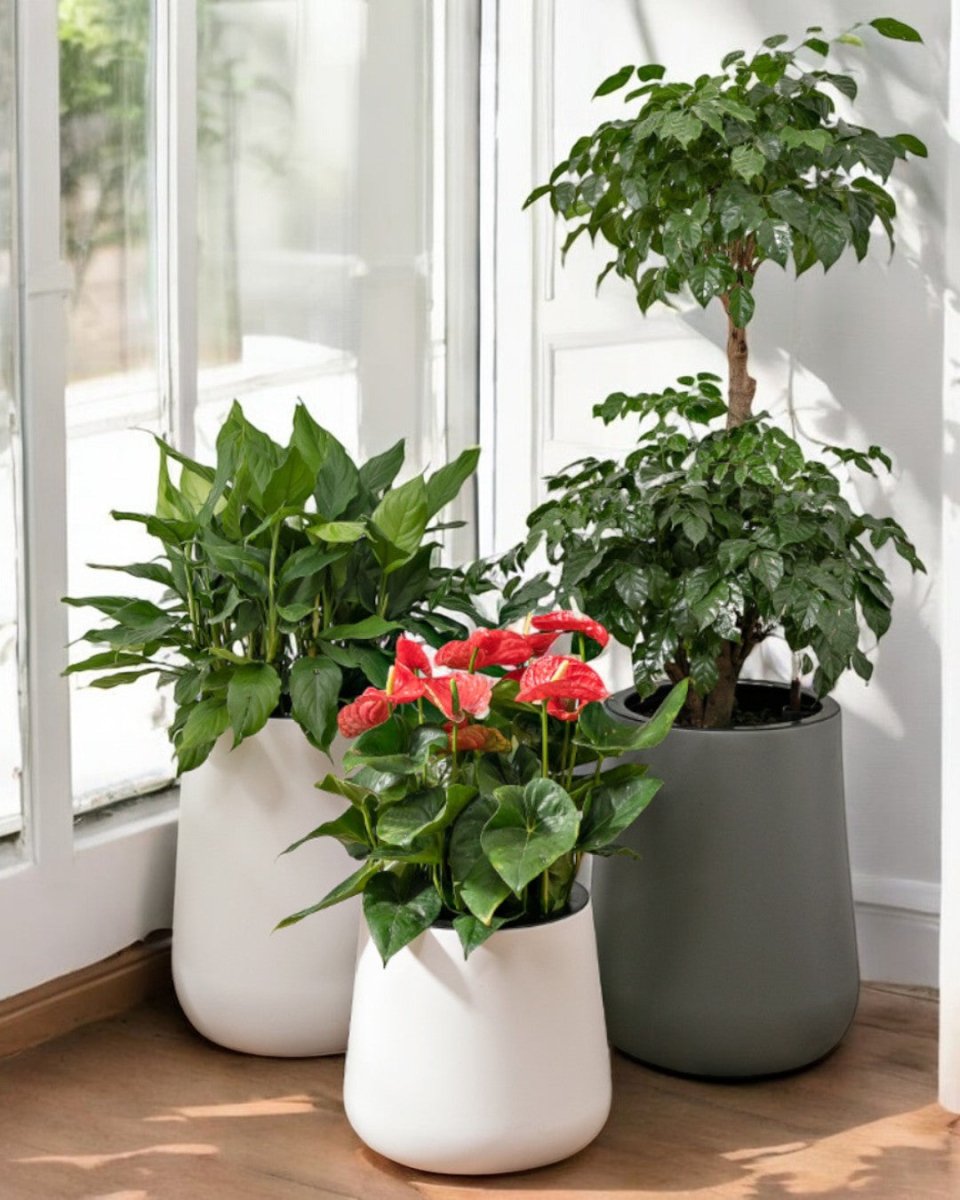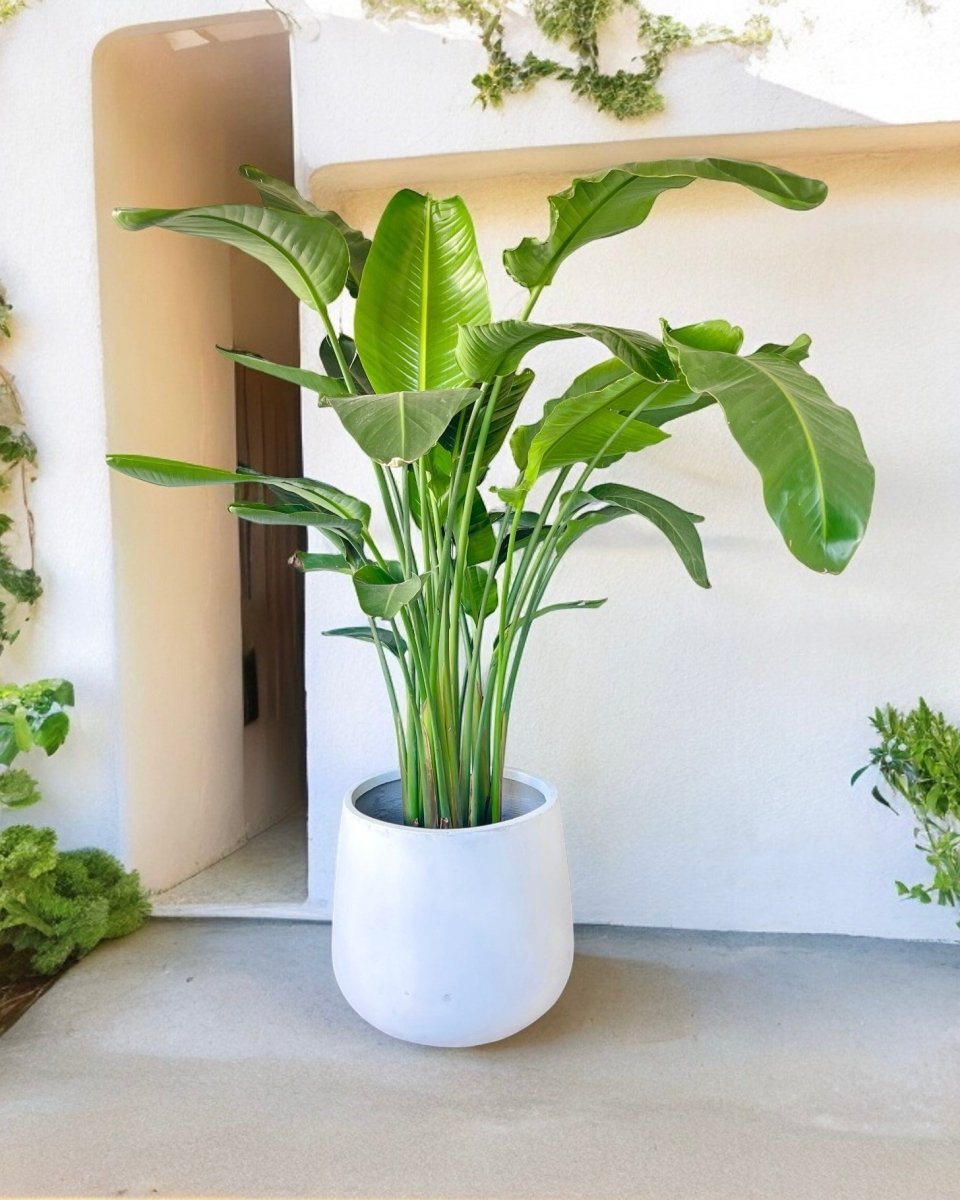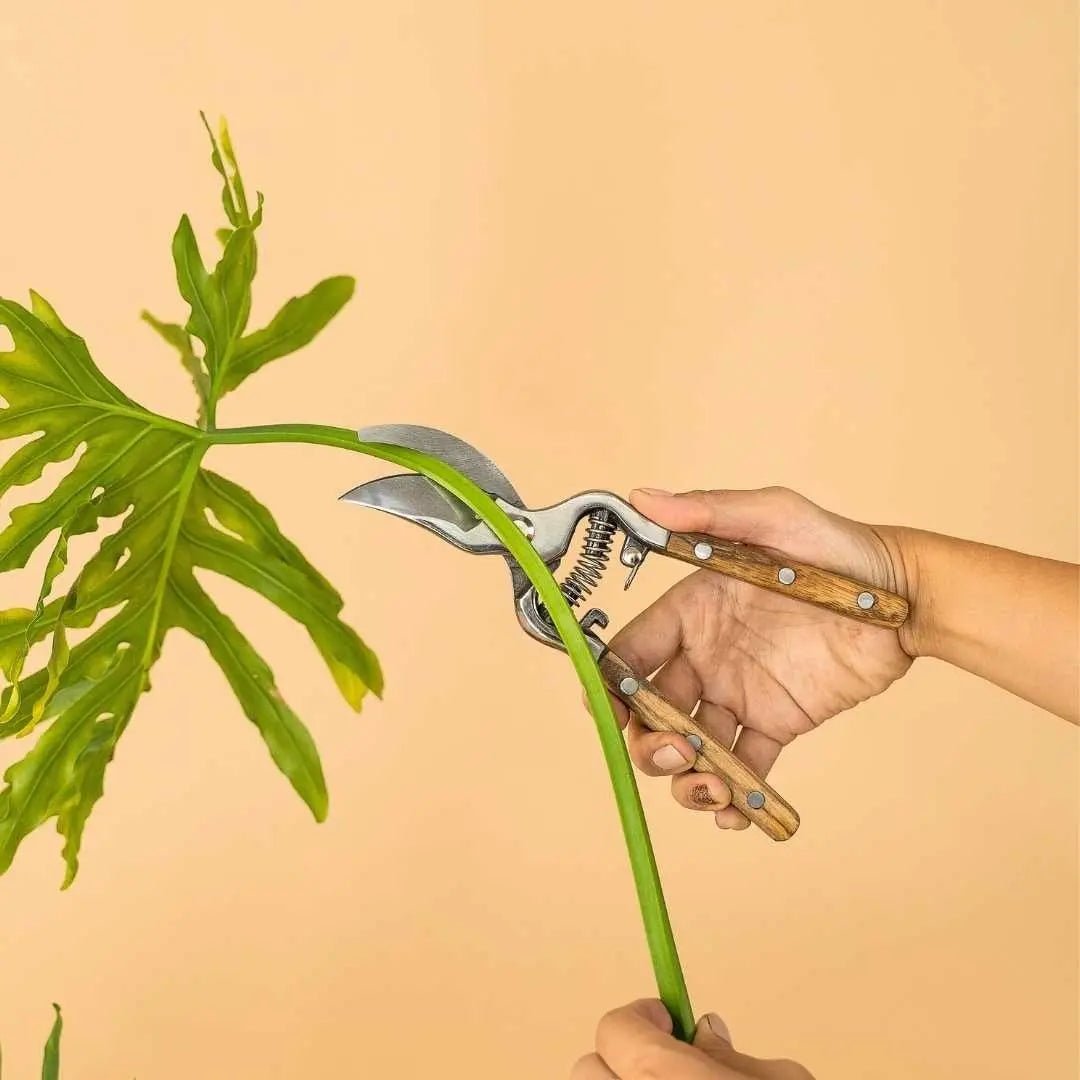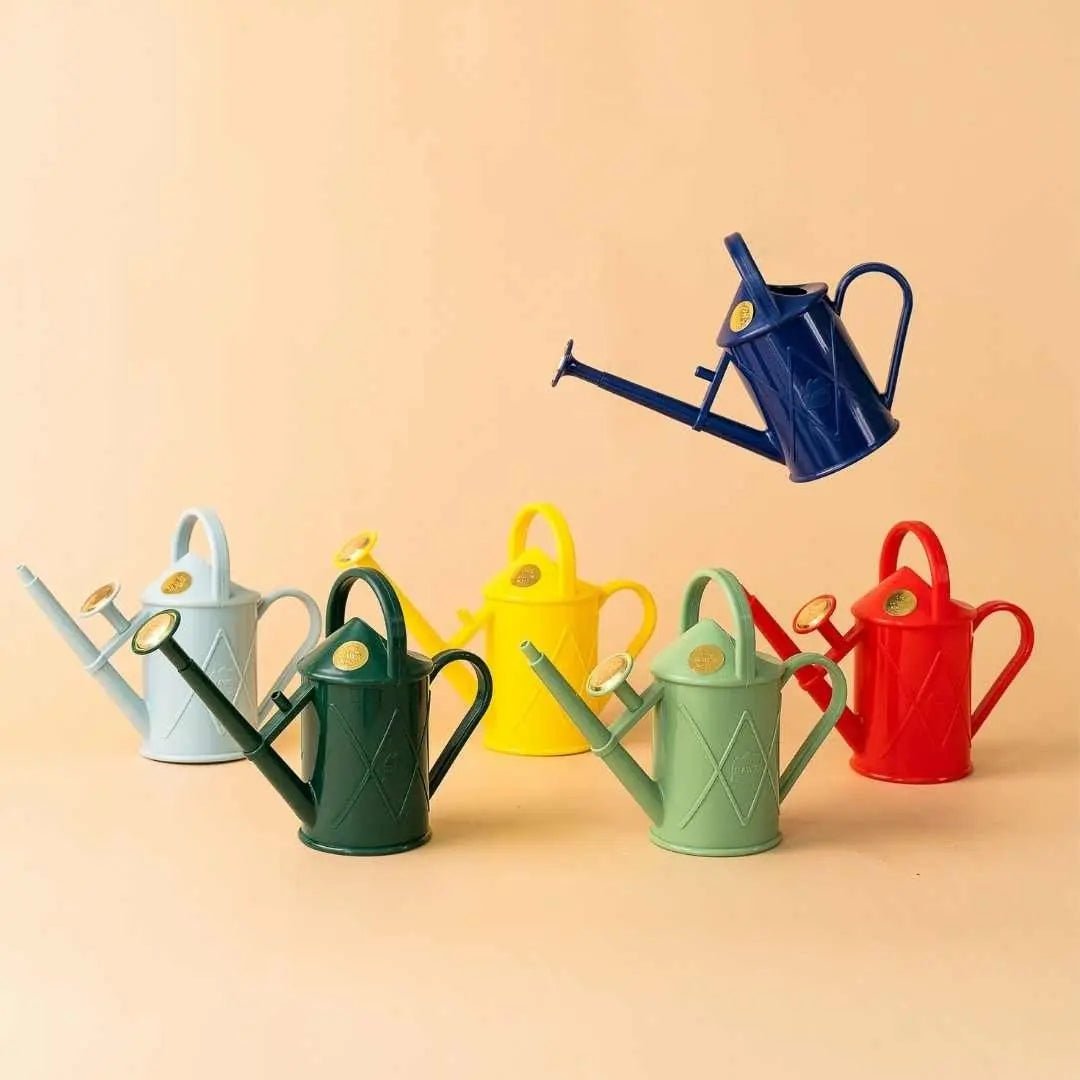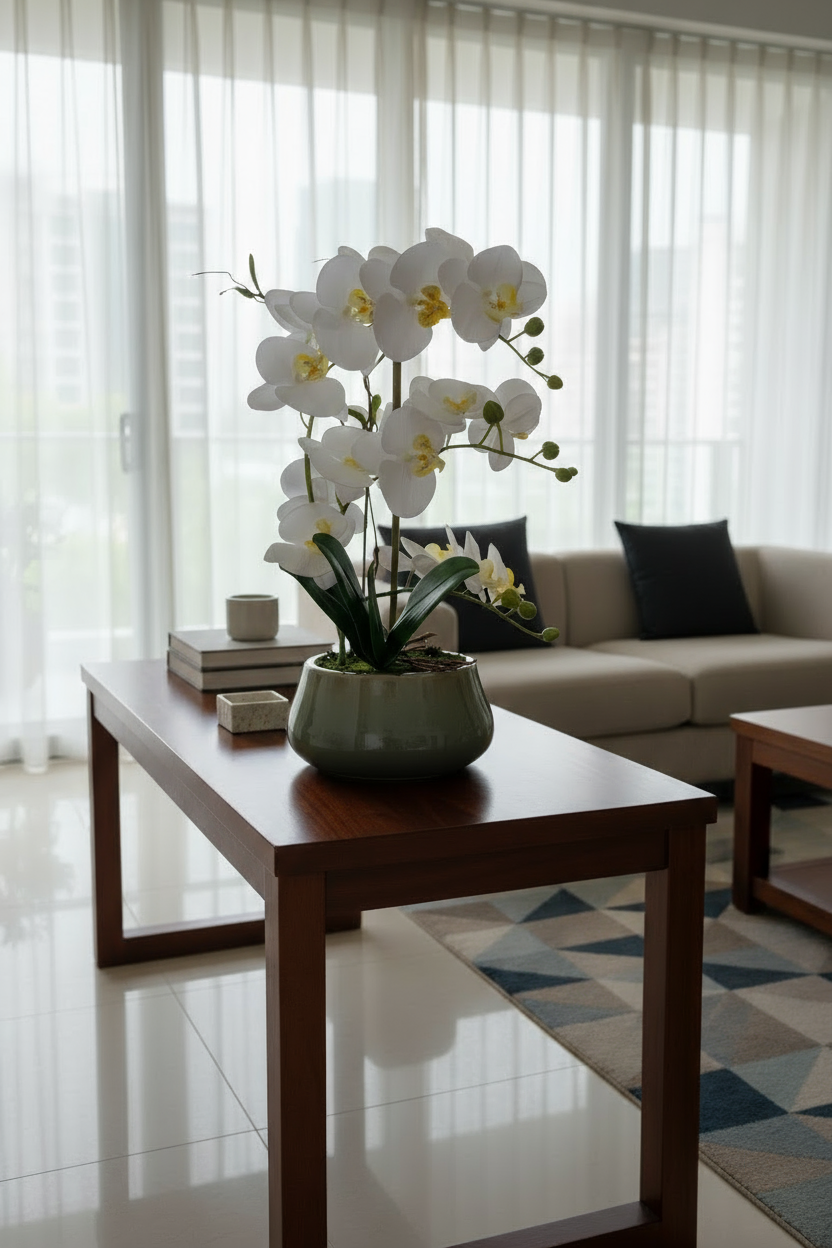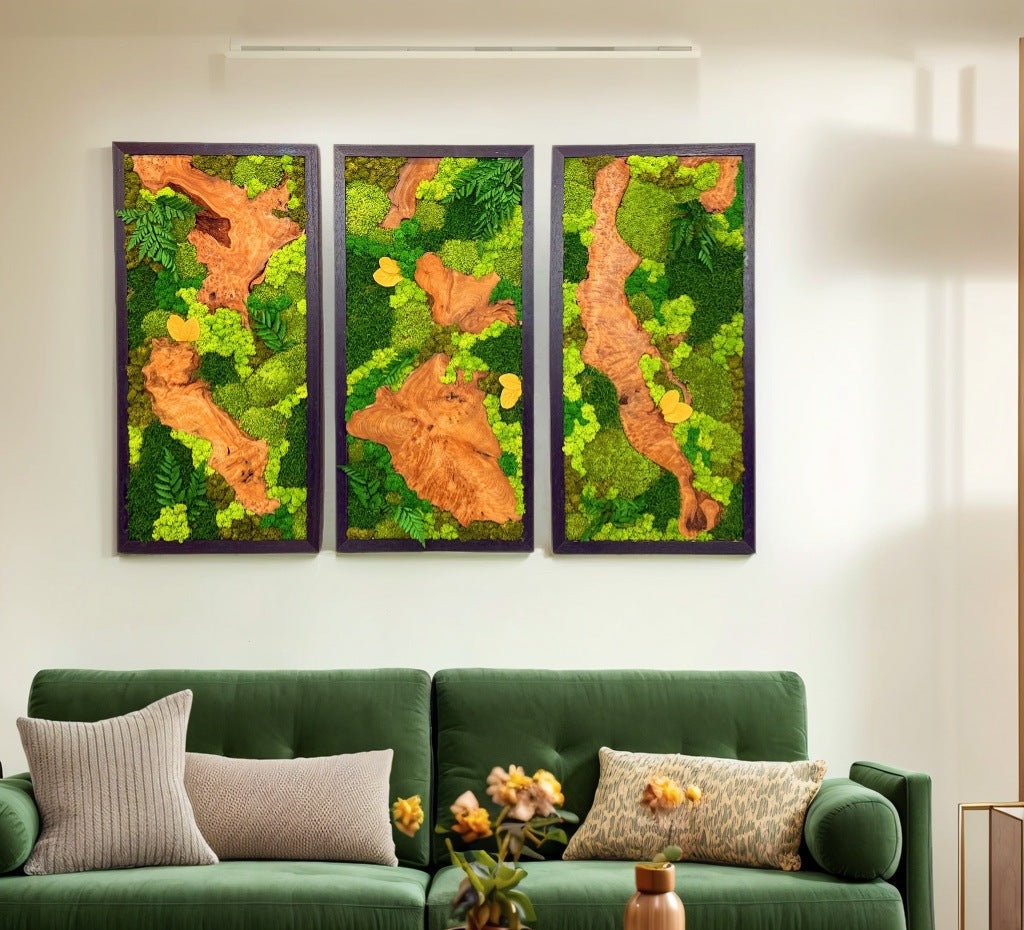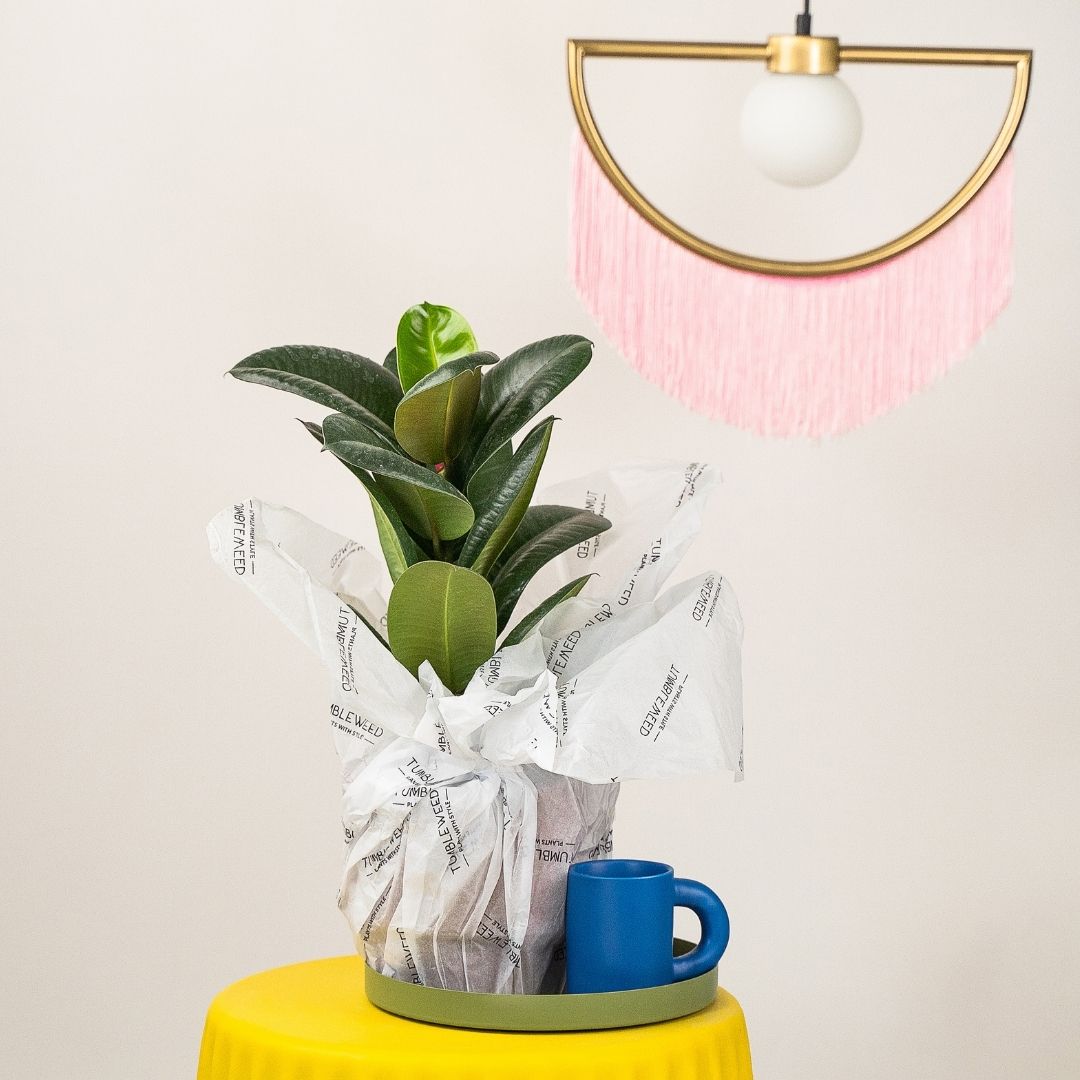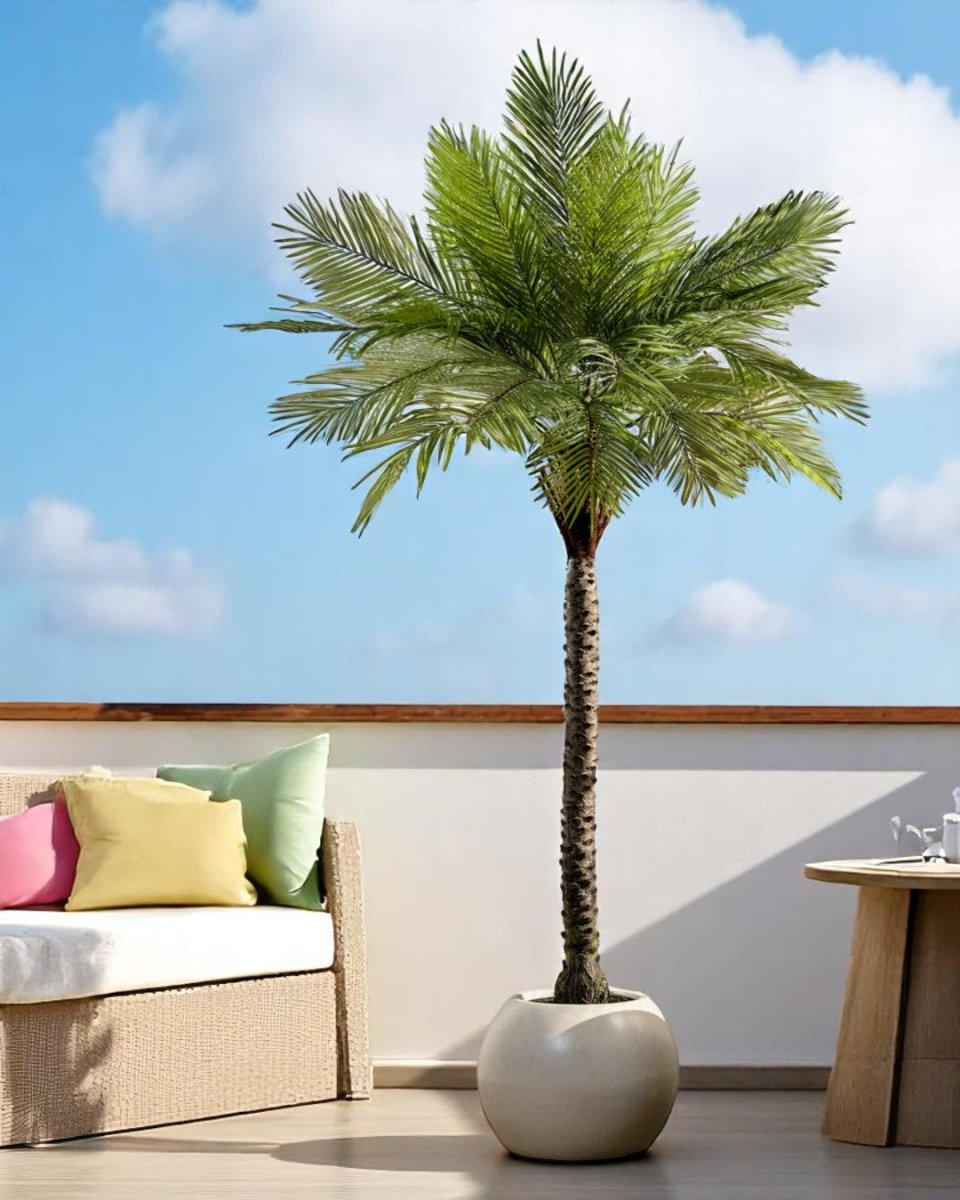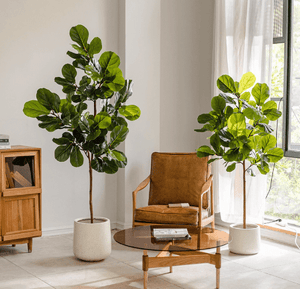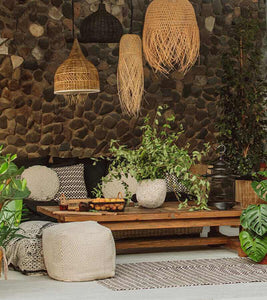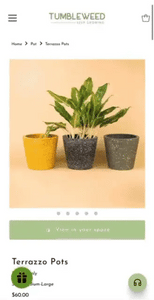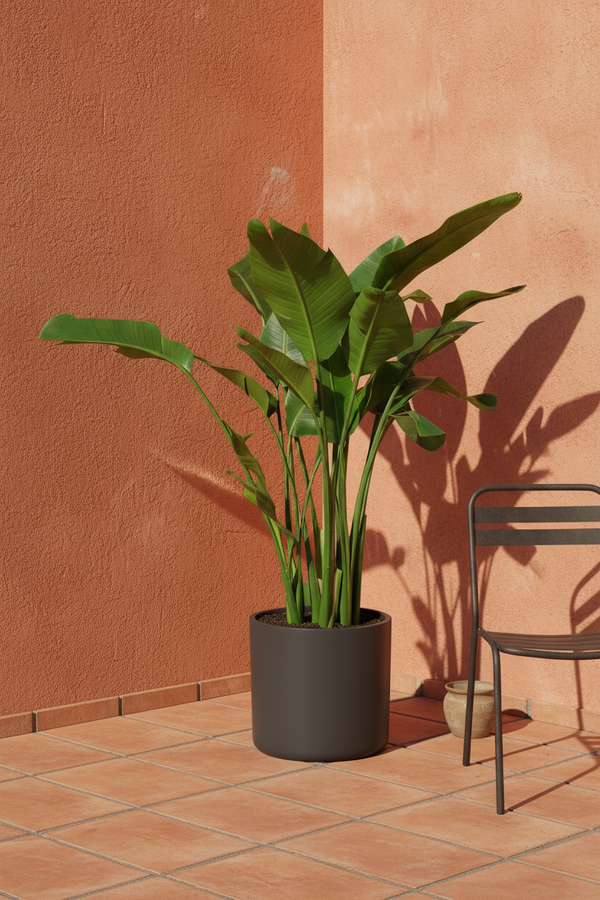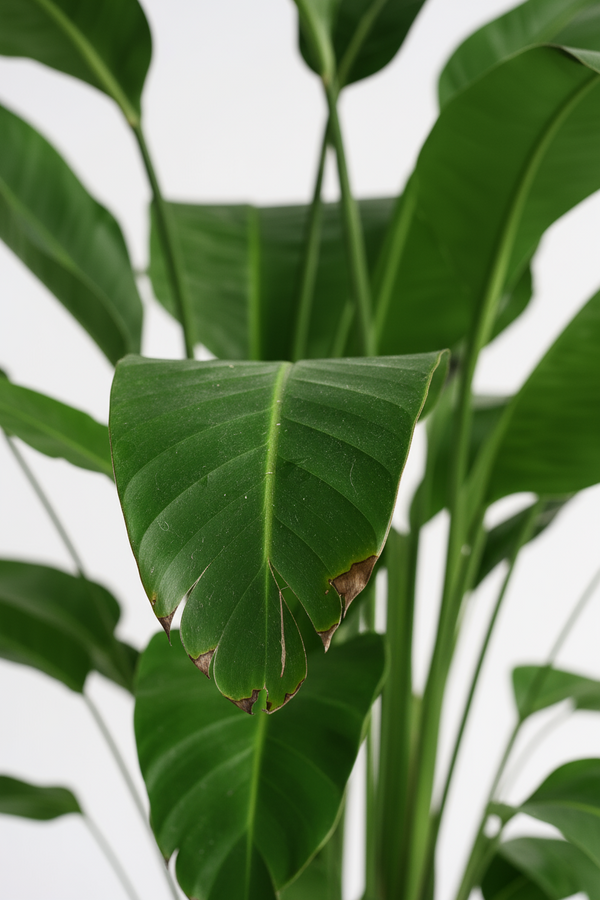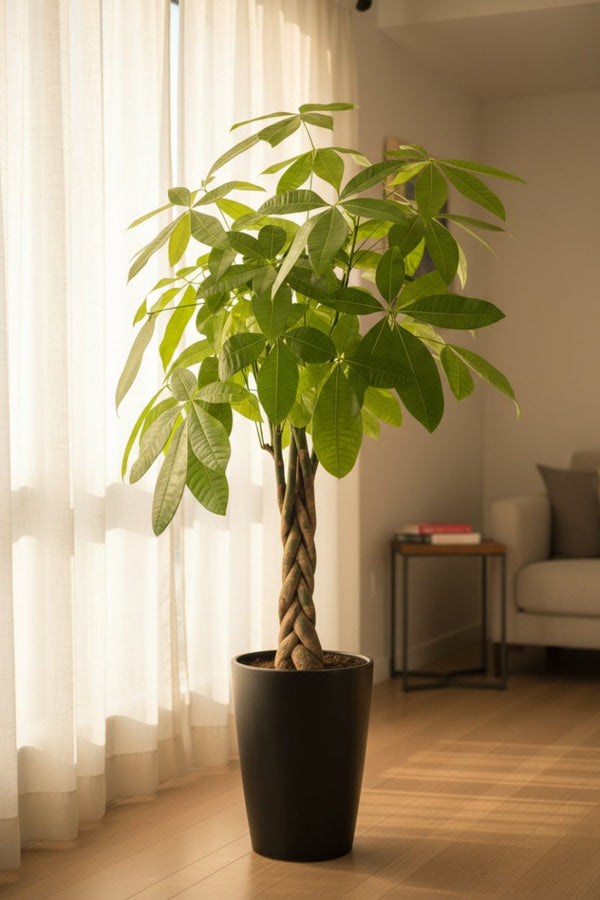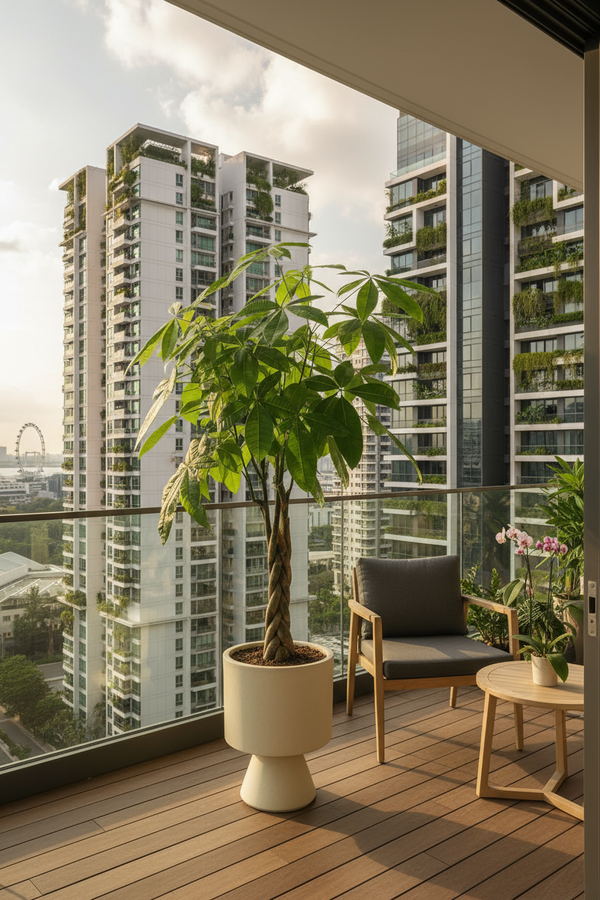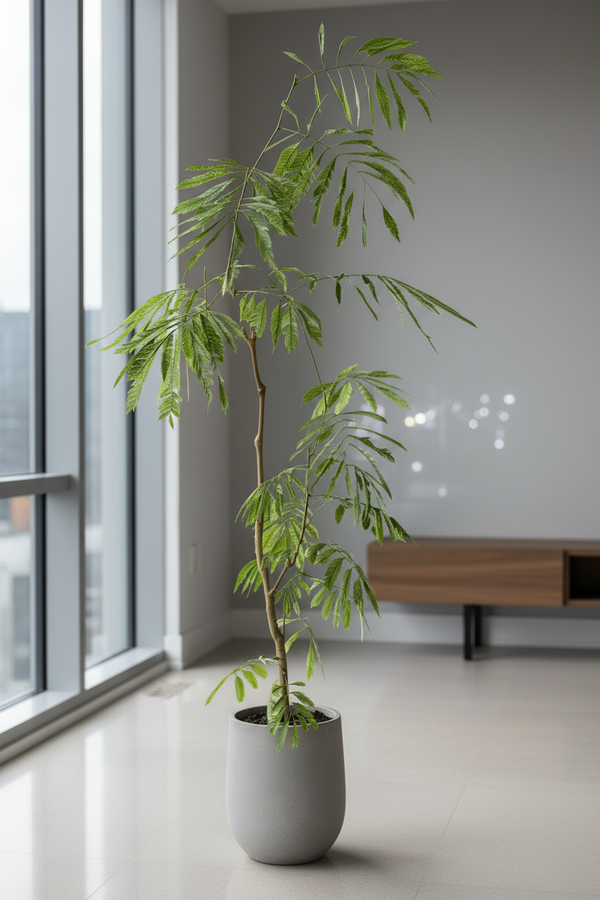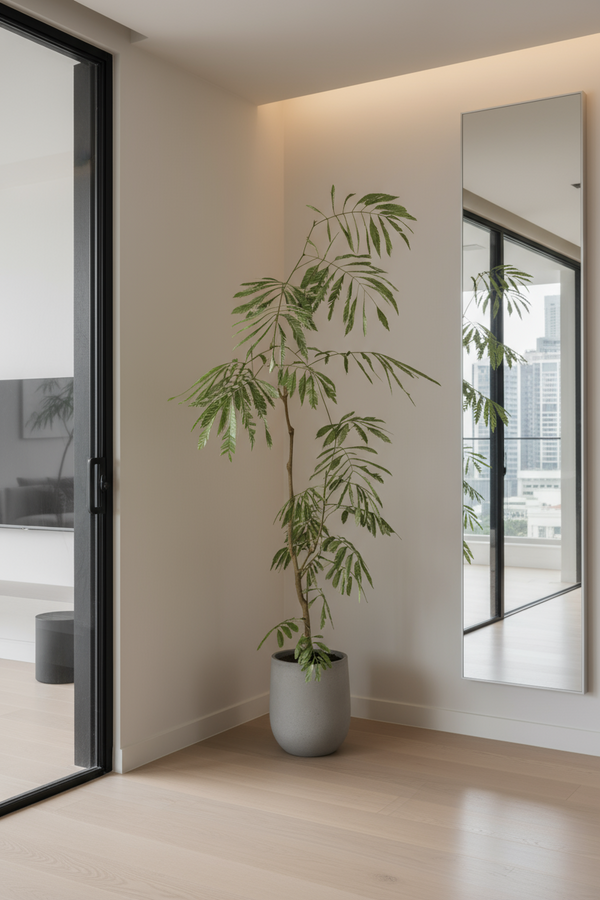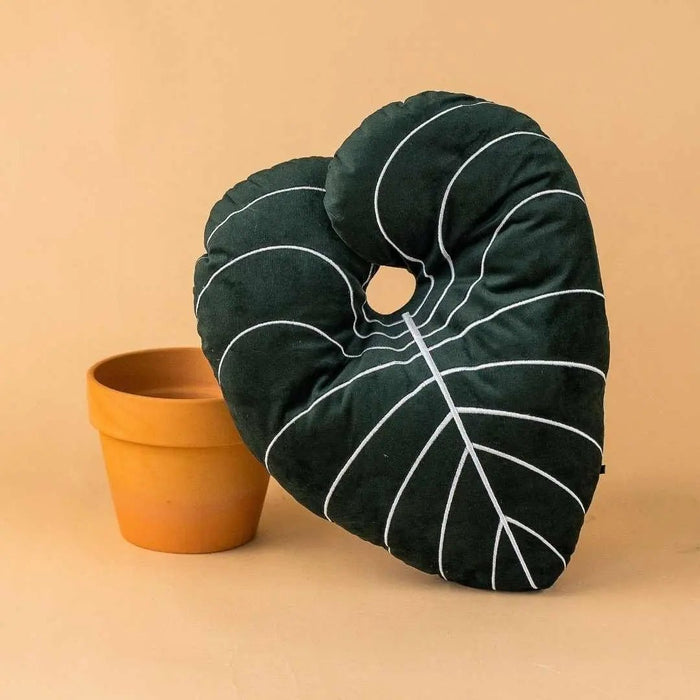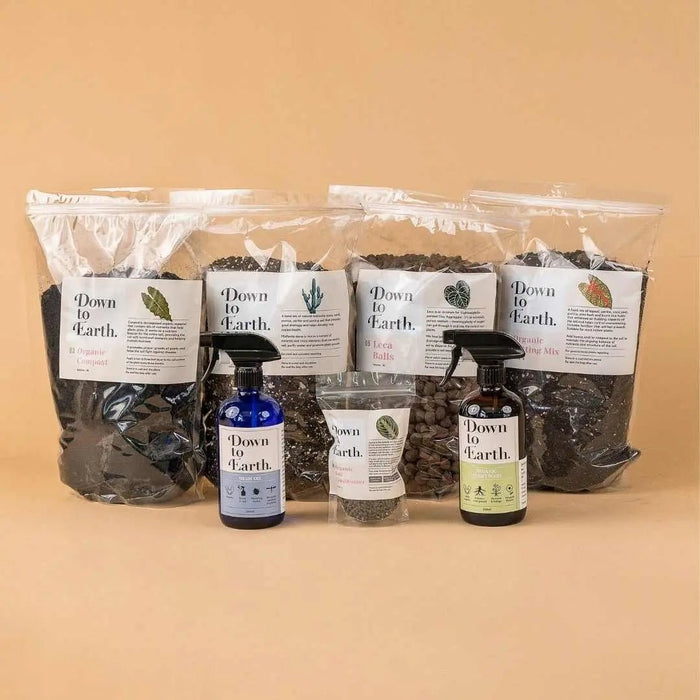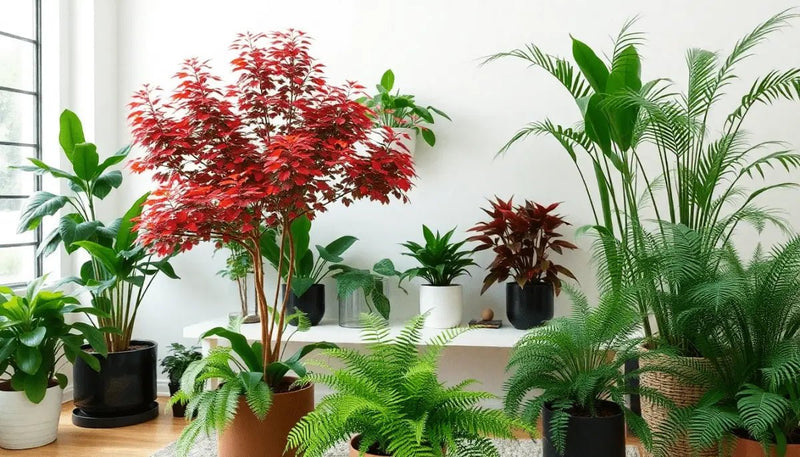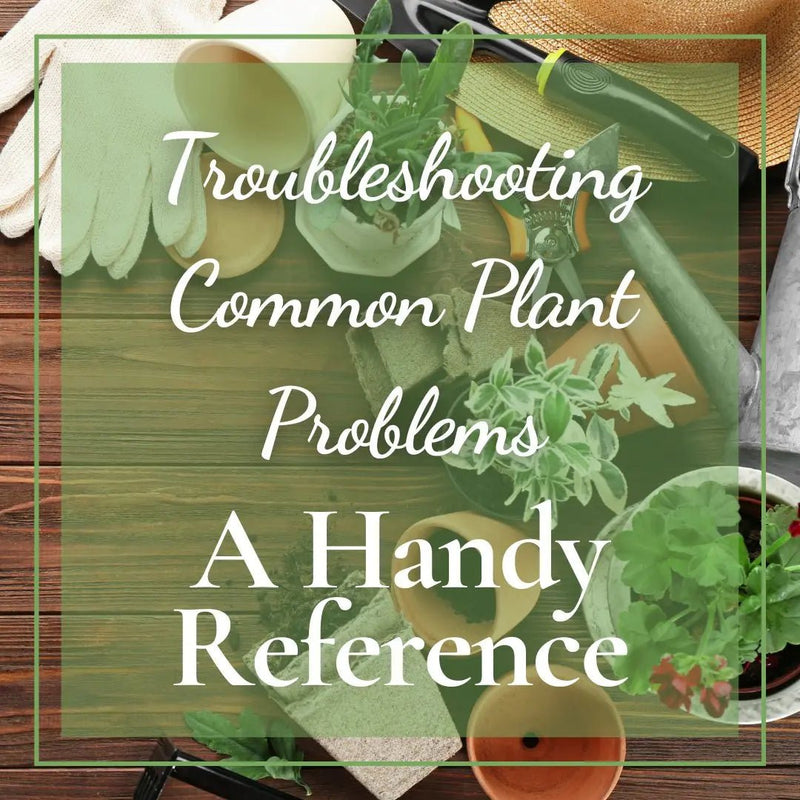Shop the Best Grow Lights for Indoor Plants at Tumbleweed
Posted on April 29 2025
Introduction to Grow Lights: Why They Matter for Indoor Plants
Indoor plants, removed from their natural outdoor environment, often face challenges in replicating the light conditions they need to thrive. Light serves as a critical factor for photosynthesis, the process by which plants convert light energy into food for growth and development. Grow lights play a key role in addressing this challenge by mimicking the light spectrum found in natural sunlight, allowing plants to flourish indoors throughout the year.
Natural sunlight provides a full spectrum of light that balances wavelengths like blue and red, both essential for plant health. However, indoor settings often do not offer sufficient light intensity or the necessary spectral balance. For example, windows may filter out certain wavelengths, while overcast weather or seasonal changes can reduce available light. Grow lights bridge this gap by delivering consistent and customizable lighting conditions.
Different types of grow lights cater to varying plant needs. Fluorescent lights, for instance, are energy-efficient and suitable for seedlings or lower-light plants. LED grow lights, on the other hand, are highly versatile, often offering adjustable spectra to accommodate various growth stages—from germination to flowering. High-intensity discharge (HID) bulbs are another option, frequently used for larger-scale indoor gardening due to their powerful illumination.
The advantages of grow lights extend beyond enhancing plant growth. They also allow growers to cultivate plants in spaces like basement gardens or urban apartments with limited access to natural light. When choosing a grow light, factors such as light intensity, spectrum, and placement should be carefully considered to match specific plant requirements. Properly integrating grow lights into an indoor gardening setup ensures that plants receive the optimal lighting conditions necessary for healthy growth.
Types of Grow Lights: LED, Fluorescent, and HID Explained
Different grow lights are designed to meet specific needs of indoor plant growth, each varying in efficiency, cost, and light spectrum output. Understanding LED, fluorescent, and HID grow lights allows gardeners to choose the best option for their plants and spaces.
LED Grow Lights
Light-emitting diode (LED) grow lights are considered one of the most energy-efficient and versatile options for indoor plant care. These lights emit a full spectrum of wavelengths, making them suitable for all stages of plant growth, from seedling to flowering. LEDs produce minimal heat, reducing the risk of damaging plants, while also minimizing energy consumption. Although they typically have a higher upfront cost, LEDs last significantly longer, resulting in long-term savings. Their compact design also makes them ideal for tight spaces or home environments.
Fluorescent Grow Lights
Fluorescent grow lights are widely used for small-scale indoor gardening, particularly for seedlings and low-light plants. Two common types include T5 and compact fluorescent lights (CFLs). T5 bulbs are highly efficient and provide a pleasing, uniform light distribution. CFLs are smaller and portable, suitable for individual plants. Fluorescent lighting is known for its low heat output, allowing bulbs to be positioned close to plants without scorching leaves. However, these lights generally lack the power needed for larger, high-light plants and may need frequent replacement, increasing their long-term costs.
HID Grow Lights
High-intensity discharge (HID) grow lights are renowned for their ability to generate intense light necessary for robust plant growth, especially during flowering phases. Common HID types include metal halide (MH) and high-pressure sodium (HPS) lamps. MH lights offer a spectrum ideal for vegetative growth, while HPS bulbs focus on the flowering stage. Although HID lights are powerful, they produce significant heat and consume more electricity, requiring additional cooling systems to prevent overheating. They are often favored for large-scale operations due to their output efficiency when used correctly.
By exploring these grow light options, indoor gardeners can make informed decisions tailored to their plants' needs, ensuring optimized growth and sustainability.
Key Features to Look for in a High-Quality Grow Light
Selecting the right grow light involves understanding several critical features that influence plant health, growth, and yield. When shopping for high-quality grow lights, it is essential to consider factors such as light spectrum coverage, energy efficiency, and build quality. Below are key features to look for when making an informed decision.
1. Full-Spectrum Lighting
High-quality grow lights should provide a full spectrum that mimics natural sunlight. The spectrum should include wavelengths ranging from ultraviolet (UV) to infrared (IR) to support all stages of plant growth—seedling, vegetative, and flowering. A balanced spectrum ensures optimal photosynthesis and development.
2. PAR Output
Photosynthetically Active Radiation (PAR) measures the amount of light useful for plant photosynthesis. Reliable grow lights should offer high PAR output, ensuring plants receive sufficient energy to thrive. When comparing lights, look for fixtures with a specific PAR value indicated.
3. Adjustability Features
Adjustable settings, such as dimmers and spectrum-changing options, allow for greater control over light intensity and wavelength output. This customization supports various growth phases and accommodates different plant types and lighting requirements.
4. Energy Efficiency
Energy-efficient grow lights reduce electricity consumption, making them cost-effective for long-term use. LED grow lights are particularly known for their energy efficiency, consuming less power while delivering optimal light output.
5. Heat Management
A reliable grow light should integrate a proper cooling system, such as built-in fans or heat sinks, to minimize overheating. Good heat management protects plants and extends the lifespan of the light fixture.
6. Durability and Build Quality
Durable structures made with high-quality materials, such as aluminum or steel, ensure long-lasting performance. Water- and dust-resistant lights offer additional protection, making them suitable for various environments.
7. Coverage Area
Consider the grow light's coverage efficiency in relation to your indoor space. Larger setups require grow lights capable of illuminating wider areas without compromising light intensity at the edges.
8. Warranty and Support
A product warranty indicates the grow light's reliability and the manufacturer's confidence in its quality. Look for lights backed by robust warranty periods and accessible customer support to address issues that may arise.
Choosing the best grow light is a multi-faceted decision influenced by physical, financial, and environmental considerations.
Best Grow Lights for Small Indoor Spaces
When selecting grow lights for compact indoor environments, it is essential to prioritize efficiency, versatility, and size. Proper lighting can enhance plant growth while optimizing limited space. Tumbleweed offers various solutions designed specifically for small-scale indoor gardening.
Key Features to Look for in Small-Space Grow Lights
- Compact Design Grow lights with a slim profile are ideal for narrow shelves, small tables, or wall-mounted setups. Compact designs ensure optimal functionality without overcrowding the space.
- Energy Efficiency Energy-saving LED grow lights are highly recommended for small areas. They consume less electricity while providing the necessary light spectrum for plants to thrive.
- Adjustable Settings Dimmable lights or those with adjustable spectrums (e.g., red and blue light) allow users to tailor the lighting conditions to specific plant needs, whether it's promoting leafy growth or encouraging flowering.
- Low Heat Output Lights with low heat emission prevent overheating in tight spaces, ensuring plants remain healthy and the surrounding environment stays safe.
- Mounting Flexibility Grow lights with clip-on features, adjustable arms, or lightweight hanging options work best for small spaces, enabling easy positioning without taking up precious room.
Best Options Available at Tumbleweed
-
Halo Plant Lights
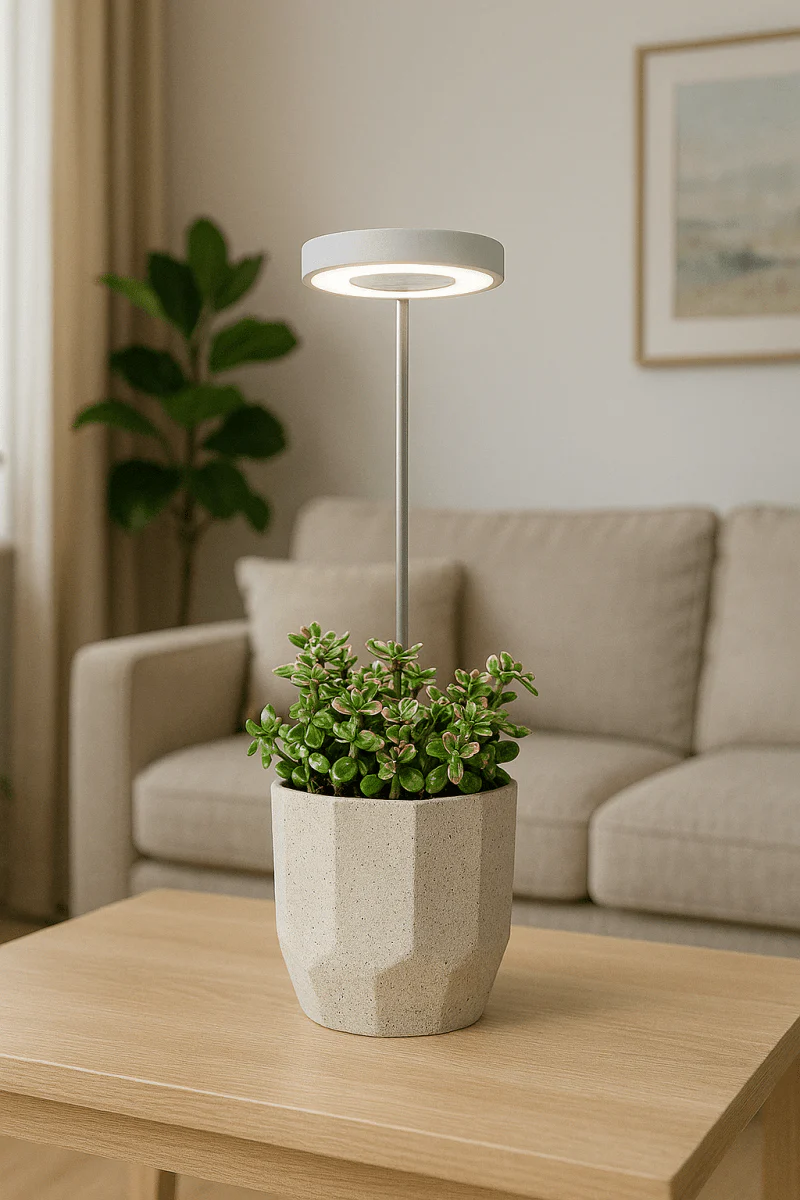
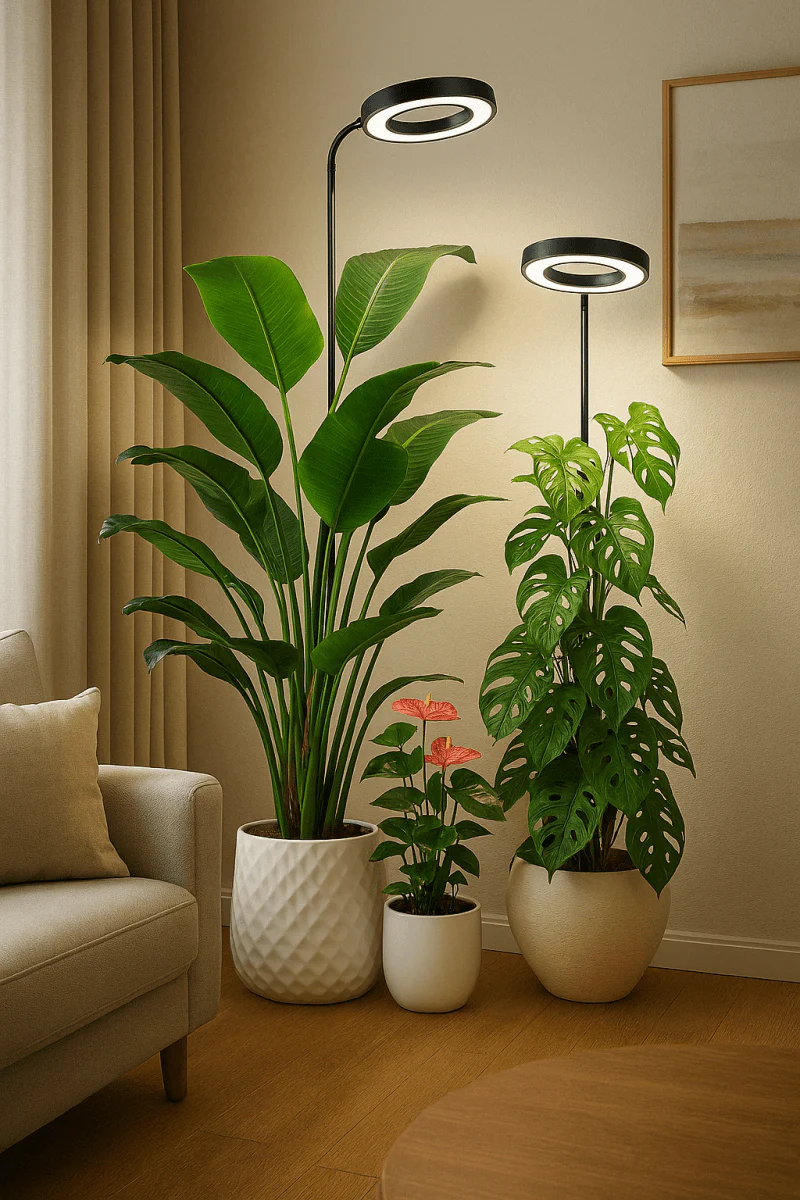
SEE PRODUCT SEE PRODUCT -
HALO Shelves Plant Lights
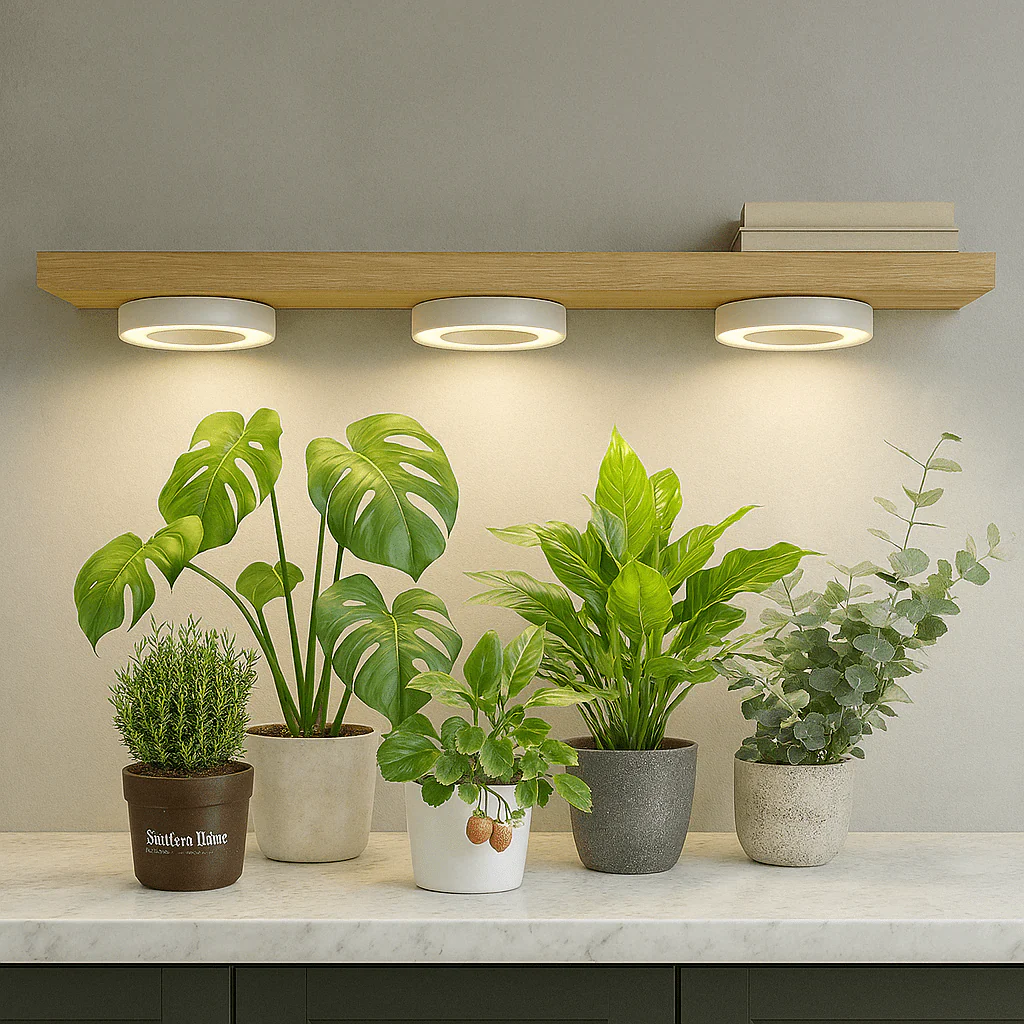
SEE PRODUCT -
Helio Plant Lights
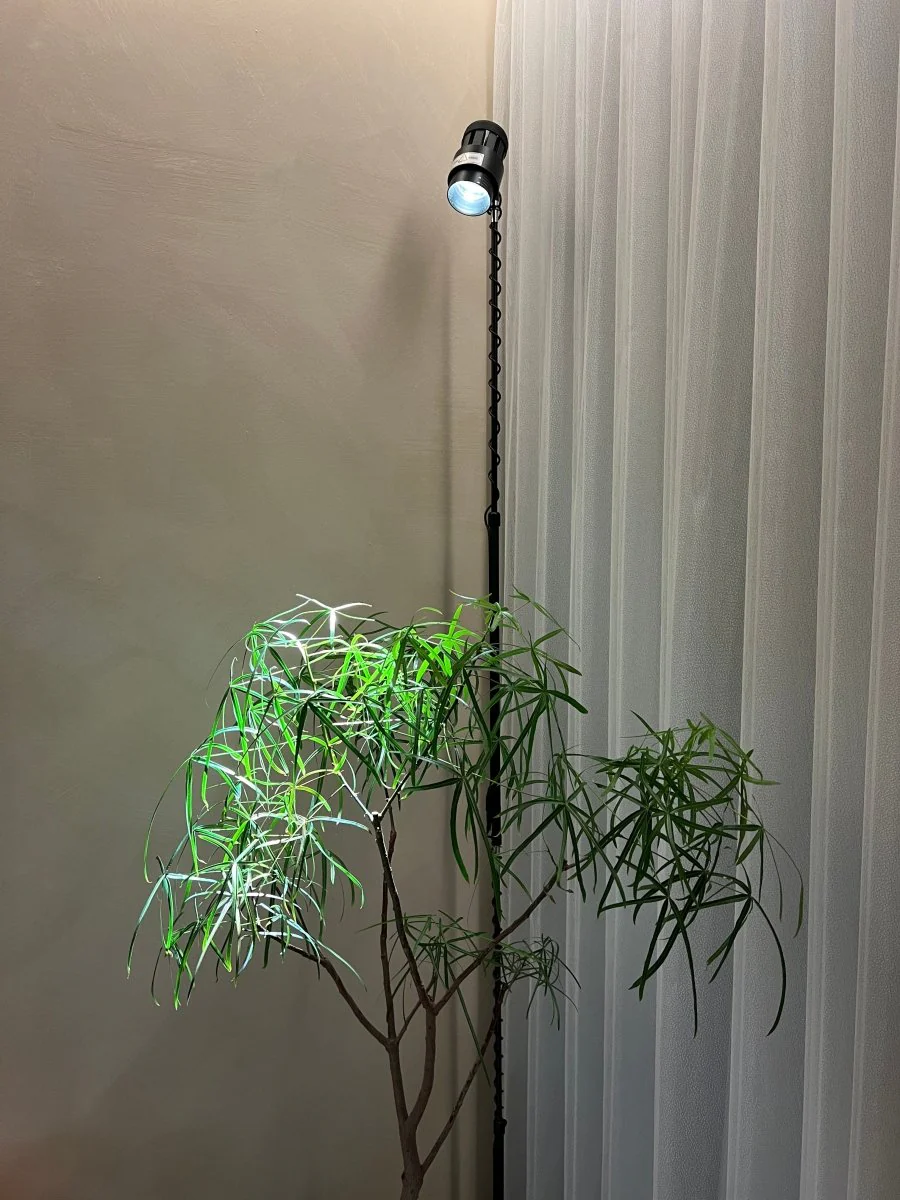
SEE PRODUCT
By offering a variety of innovative and space-friendly options, Tumbleweed ensures indoor plant care remains accessible, even in the smallest living spaces.
Top Grow Lights for Large Plant Collections
For indoor gardens with extensive plant collections, selecting the right grow lights is crucial to ensure all plants receive optimal lighting conditions for their growth. Different models cater to varying needs, offering flexibility, power, and efficiency for large-scale setups.
Key Considerations for Large Collections
When managing numerous plants indoors, it is essential to prioritize certain factors to maximize coverage and light efficiency:
- Coverage Area: Ensure the grow light adequately covers the entire space. Lights with broader coverage or adjustable dimensions work best for larger setups.
- Intensity and Wattage: High-lumen grow lights with adjustable intensity are ideal because they support diverse plant species with varying light requirements.
- Energy Efficiency: LED grow lights are often recommended for their energy-saving properties while maintaining optimal performance for large spaces.
- Customization Options: Look for lights with adjustable spectrums or timers to align lighting schedules with specific plant needs.
Popular Types of Grow Lights
Selecting the appropriate type of grow light involves understanding the features and benefits each offers. Below are some common types used for large plant collections:
- LED Grow Lights: Known for energy efficiency and long lifespan, LEDs provide consistent, broad-spectrum lighting. Many models offer dimmable options and programmable timers, making them versatile for large setups.
- Fluorescent Lights: Affordable and ideal for smaller budgets, fluorescent lights work best for plants requiring moderate light levels. They are slightly less effective for intensive growth needs compared to LEDs.
- High-Intensity Discharge (HID) Lights: These lights deliver powerful illumination and are suitable for setups with high-light-demand plants. However, they tend to consume more energy and might need cooling systems due to heat production.
Top Features in Quality Grow Lights
Grow lights designed for large spaces often include advanced features to enhance functionality and convenience:
- Modular Designs: Allow users to expand lighting systems as collections grow.
- Full Spectrum Lighting: Mimics natural sunlight, supporting optimal photosynthesis.
- Durability: Materials resistant to wear and tear, ensuring longevity in busy indoor gardens.
Investing in high-quality grow lights tailored to large plant collections ensures every plant thrives, regardless of their position within the setup.
Full Spectrum vs. Red/Blue Spectrum: Which is Right for Your Plants?
Choosing the appropriate grow light spectrum is essential for promoting healthy plant growth indoors. Full spectrum and red/blue spectrum lights deliver different benefits tailored to specific plant growth stages, so understanding their functions can guide an informed decision.
Full Spectrum Lights
Full spectrum lights mimic natural sunlight, encompassing a wide range of wavelengths, from ultraviolet (UV) to infrared (IR). These lights are designed to support all stages of plant growth, making them a versatile option. Their balanced light composition ensures that plants receive the necessary energy for photosynthesis while fostering proper vegetative and flowering development.
- Benefits of Full Spectrum
- Ideal for growing a variety of plants under one light source.
- Encourages even, natural growth in indoor environments.
- Suitable for year-round growing, replicating outdoor conditions. However, full spectrum lights tend to consume more energy and may be costlier upfront compared to other options.
Red/Blue Spectrum Lights
Red/blue spectrum lights target specific wavelengths crucial for optimal plant growth. Blue light promotes photosynthesis and strong vegetative growth, contributing to thicker stems and healthier leaf development. Red light plays a crucial role during flowering and fruiting stages, enhancing yield and the quality of produce.
- Benefits of Red/Blue Spectrum
- Energy-efficient alternative to full spectrum lights.
- Tailored for plants with distinct light needs, such as flowering herbs or tropicals. While effective, these lights may not provide a visually natural setting and can limit versatility when cultivating plants requiring diverse spectrums.
Choosing the Right Spectrum
The decision between full spectrum and red/blue spectrum lights depends largely on plant type, growth stage, and indoor growing goals. Those nurturing a varied collection or seeking year-round growth may benefit more from full spectrum lights. On the other hand, growers focusing on specific plant cycles or power efficiency may find red/blue spectrum options more suitable. Balancing energy costs and light effectiveness is a critical consideration.
How to Position and Adjust Grow Lights for Optimal Growth
Proper positioning and adjustment of grow lights are essential for fostering healthy indoor plants. When setting up grow lights, several factors, such as light intensity, distance, and duration, must be taken into account to mimic natural sunlight effectively.
Determine the Correct Distance
The distance between the grow light and the plant greatly affects growth. Generally, the distance depends on the type of light used:
- Fluorescent Lights: These can be positioned 6–12 inches above plants due to their low heat emission.
- LED Grow Lights: Typically placed 12–24 inches away, striking a balance between intensity and safety.
- High-Intensity Discharge (HID) Lights: These emit significant heat and should be mounted at least 24 inches away.
Monitoring should be done regularly to ensure plants benefit from sufficient light without suffering burns or stress.
Adjust as Plants Grow
As plants mature, their light requirements may change. Use adjustable fixtures or hangers to raise lights as plants grow taller. Ensure consistent spacing to avoid uneven development or overexposure.
Evaluate Light Duration
Different species of plants have varying photoperiod needs:
- Short-Day Plants: Require around 10–12 hours of light per day.
- Long-Day Plants: Thrive with 14–18 hours of light.
- Day-Neutral Plants: Perform well with 12–16 hours depending on their natural growing conditions.
Timers or smart switches can automate light schedules, ensuring that plants receive light and darkness in appropriate cycles.
Monitor Plant Health
Signs of insufficient light include leggy growth and pale leaves, whereas scorched or curled leaves may indicate excessive light or heat. Adjustments should be made based on observed symptoms. Plant progress should consistently be documented to refine light placement and timing strategies.
By carefully positioning, adjusting, and monitoring grow lights, gardeners can create an environment conducive to robust indoor plant growth.
Conclusion: Enhancing Your Green Thumb with the Right Grow Light
Selecting the appropriate grow light is an essential step in fostering healthy indoor plants. Proper lighting ensures that plants receive the critical wavelengths needed for photosynthesis, boosting their growth cycles and overall vitality. Different plant species have varying light requirements, and understanding these needs is key to achieving thriving greenery, even in spaces with limited or no natural sunlight.
Grow lights vary in type, intensity, and spectrum. For example, Full-Spectrum LED grow lights simulate natural sunlight and support plant growth from seedling to maturity. Fluorescent lights are well-suited for low-light plants or smaller spaces, while High-Intensity Discharge (HID) lights deliver the intensity required for commercial-scale setups. Tailoring the grow light choice to match the plant species and space constraints enhances the indoor gardening experience.
Placement also plays a critical role in maximizing the effectiveness of grow lights. Positioning the light at the right distance prevents plants from becoming overheated or developing uneven growth patterns. Adjustable fixtures offer flexibility to accommodate plants’ developmental stages. Additionally, timers and dimmers provide convenience while maintaining consistent light cycles aligned with natural growth rhythms.
Energy efficiency and longevity should also guide purchasing decisions. Though initial costs for high-quality LED lights may be higher, their durability, low heat output, and reduced energy consumption make them a cost-effective investment in the long term. Understanding these factors empowers growers to optimize plant care while being mindful of environmental impact.
With the right knowledge and tools, indoor gardeners can replicate ideal outdoor conditions, enhancing plant health and aesthetic appeal. A carefully chosen grow light transforms any indoor corner into a thriving oasis, demonstrating the power of thoughtful planning and dedicated care in gardening.

